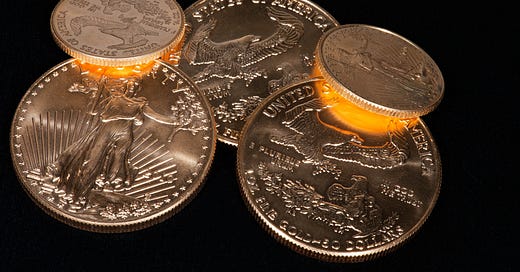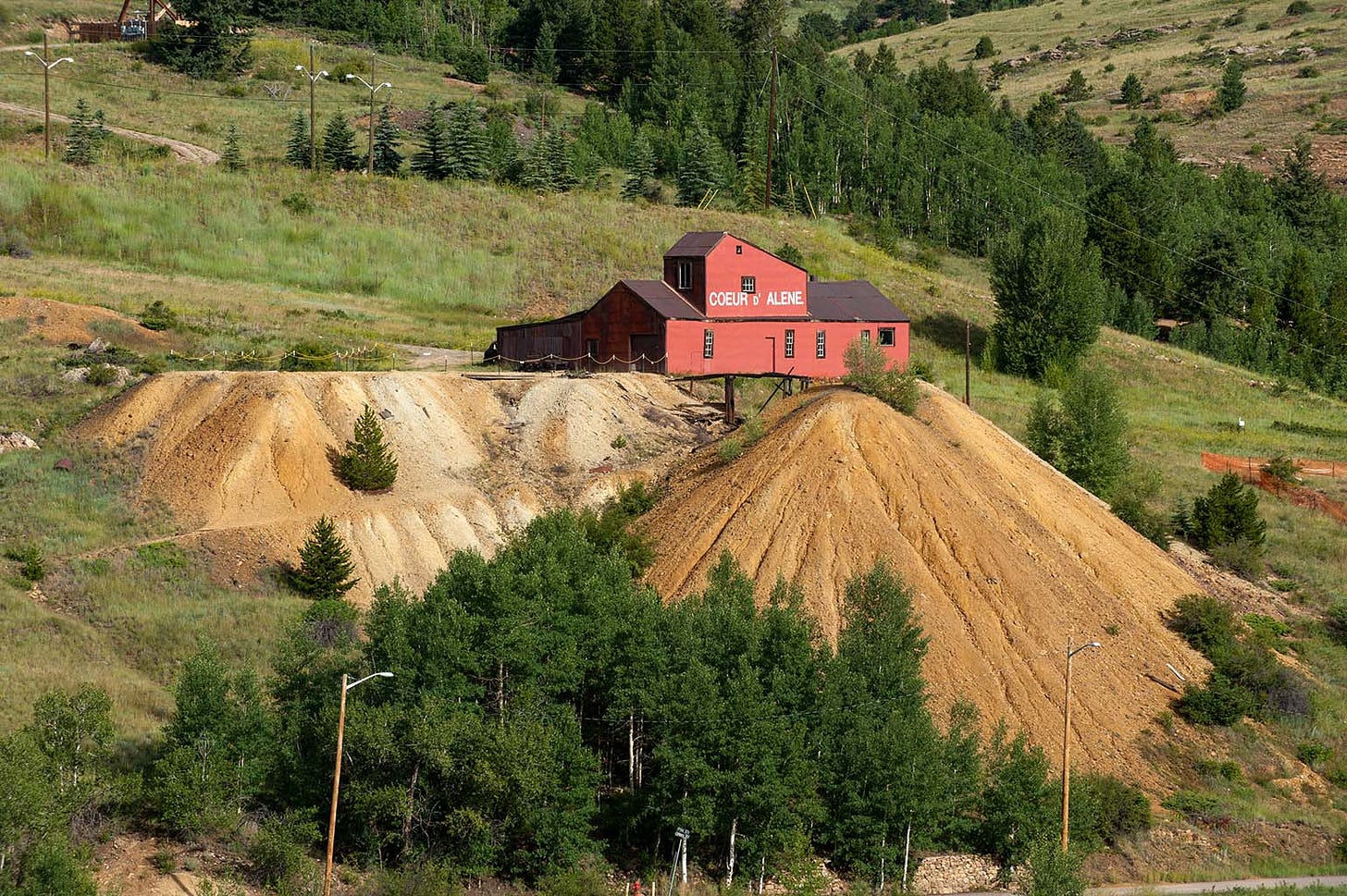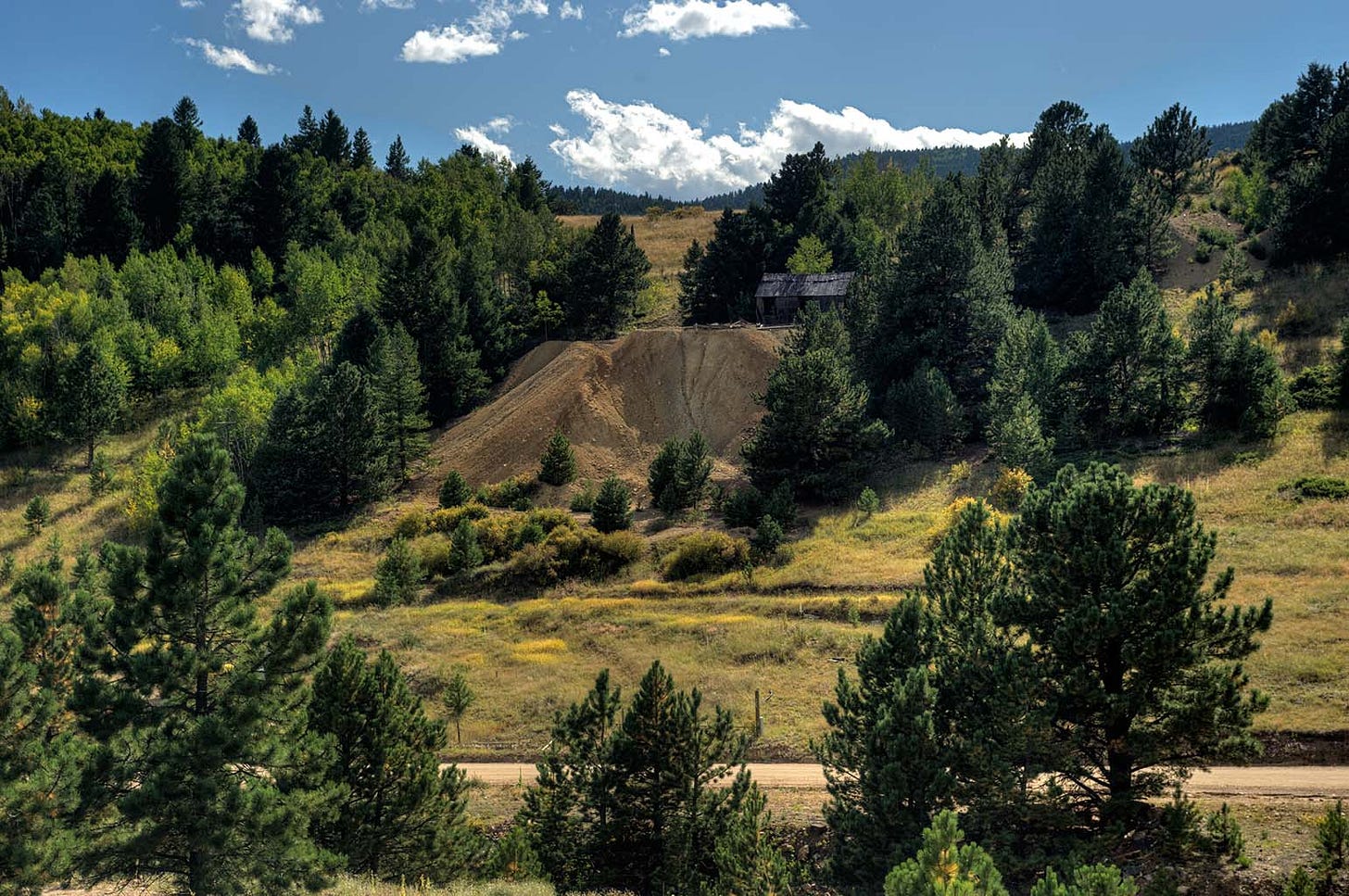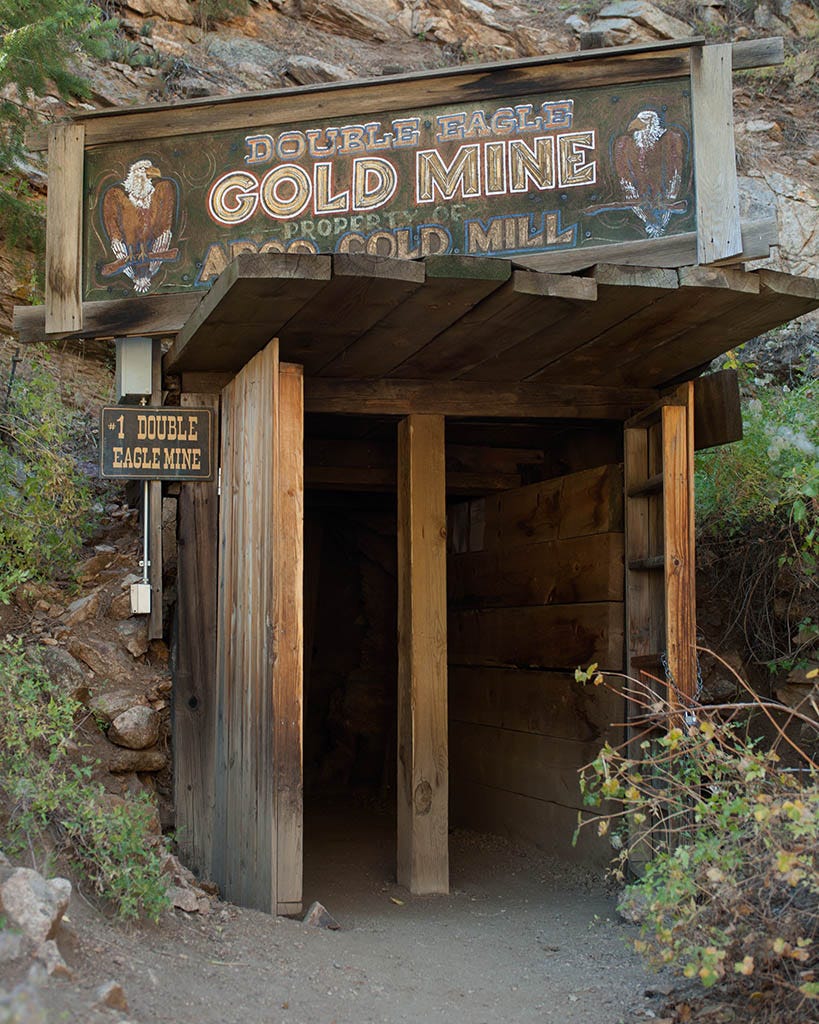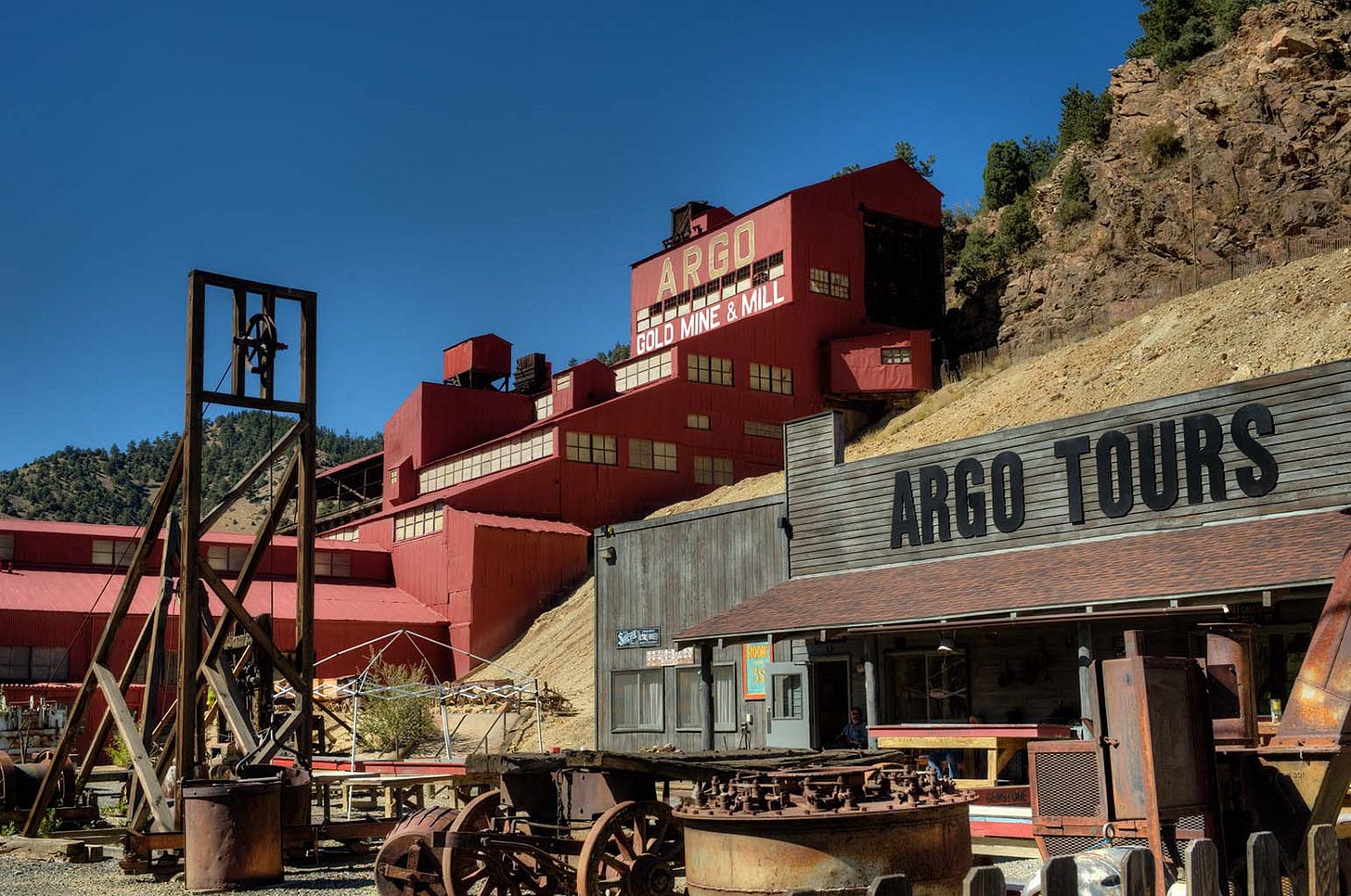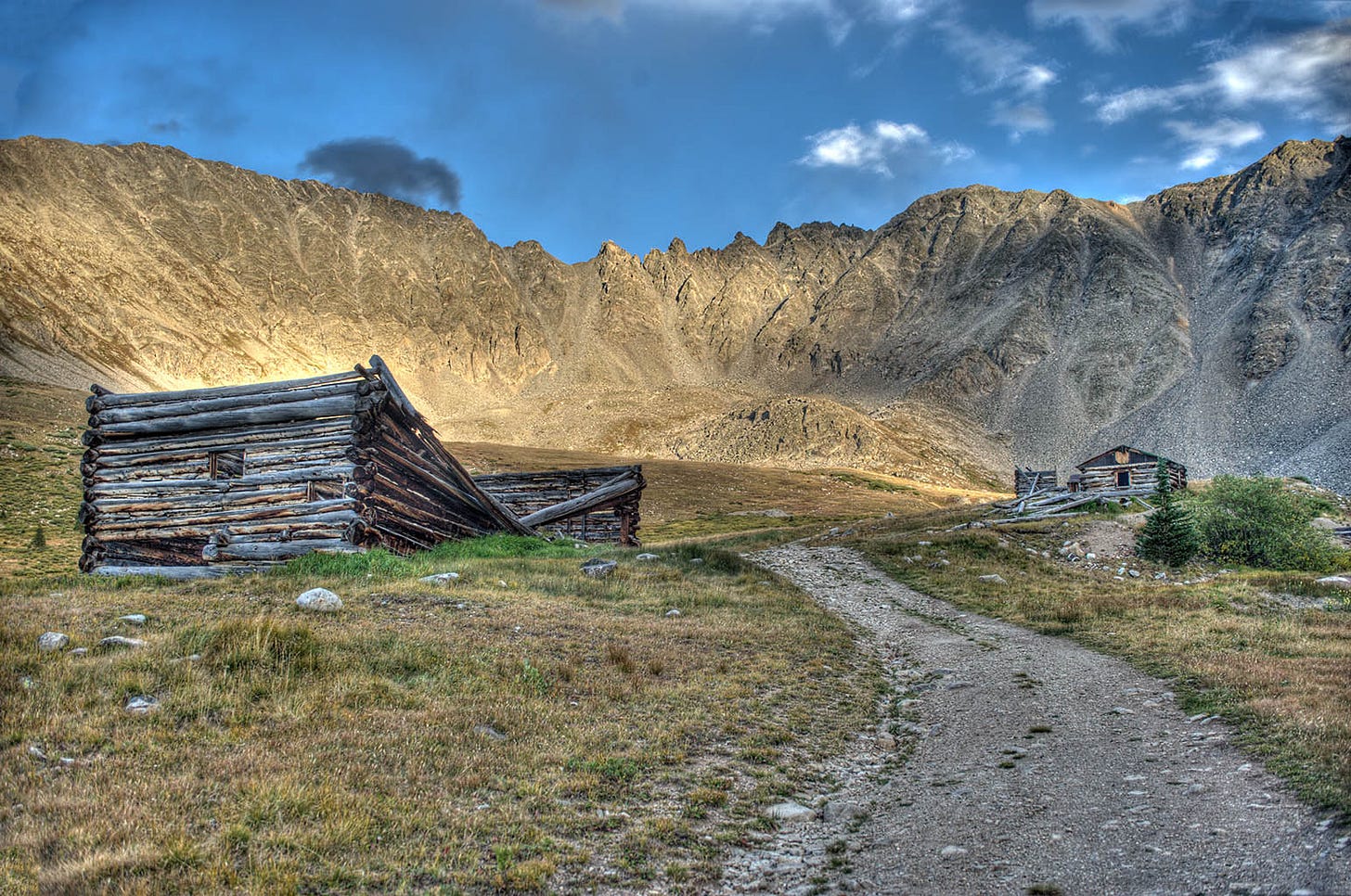Gold is a beautiful metal.
And the old saying is true: gold does not glitter (but iron pyrite, Fools’s Gold, does). It glows. Anyone who has ever mined it, panned for it, held bullion-grade gold in his hands, can tell you that.
It has been treasured for thousands of years. Two thousand years ago, a man could buy a fine toga, a belt, and a pair of good sandals for one ounce of gold. Today, it still buys a good tailored suit, a belt, and a pair of dress shoes. When I was a kid, an ounce of gold would pay a months’ rent and electricity. It still does, in most places.
It is with good reason that, when gold is discovered somewhere, there is a gold rush. Central City, where I lived my first summer in Colorado, was the site of the first gold rush in that state (Cripple Creek, where they are still mining gold, came a few months later).
Here’s a prominent building above town that, last time I was there, a group was working to restore to turn into a museum: The historic Coeur d’Alene mine.
This was a shaft mine: the hole goes straight down (if the hole is horizontal, it’s a stope mine). I was allowed inside the building one day, though it wasn’t open to the public, and got to peer down the shaft myself. The shaft is directly beneath the tallest point on the roof: that’s where the hoist is. I think they let me in because I’m an old miner myself, having worked at US Antimony in Montana in my youth.
Those piles of ground-up rock all around the building are called “tailings.” A vein of gold is, at most, a few inches across but to get at it a stope (horizontal tunnel) has to be big enough for men to walk into, and drill and blast. So there is a lot of waste. The rock gets ground up, and only the ore goes to the mill (later in this post) for smelting. The rest was discarded right there at the mine entrance. Central City is dotted with hundreds to thousands dozens to hundreds of these tailings piles. Here’s another old mine a couple of miles away:
Geologists say that 90% of the gold is still there in that mountain.
Most of the ore in Central City was shipped through a tunnel that comes out at Idaho Springs, Colorado to a mill called the Argo. Today, it is a museum that you can tour, including one old stope mine on the mill property. The tour is worth it: they even give you lessons in panning there, with enriched dirt that is guaranteed to have some small flecks of gold in it! Here’s the old mine:
There is still gold ore that you can see in the rock walls of that stope. Behind heavy chain-link fabric to keep you from grabbing yourself a little chunk!
Here is the historic mill, which milled ore for a great many of the Central City mines:
If you're ever in Idaho Springs when this place is open, take the tour.
The Colorado Mineral Belt — the places where gold was discovered — lies along a northeast-southwest line that slices at an angle through the Rockies, ending in the San Juan volcanic field in the southwest corner of the state. Most of the recoverable gold is gone — there are still a few scattered mines operating — but other minerals, such as molybdenum, are still being extracted.
It seems that the gold was always in the most inaccessible places with the harshest winters. I guess that’s part of the allure of the Old West: grizzled old men who risked everything for riches. But it was mostly the bankers, brewers and saloon owners who got rich.
Forty miles away from here (about a hundred miles by road) are the ruins of another historic mine: the Boston Mine in Mayflower Gulch. 11,500 feet above sea level (above treeline) and just under the Continental Divide, it could only be worked in the summers. There’s a 4WD road up there that you’re not supposed to be on but the gate is broken and anyway it’s a short walk. A long walk if you didn’t bring oxygen. What’s left are the ruins of some old miner’s cabins and some stark beauty:
The digital effect here is called “Painterly” which I do with a few of my photos. I mostly like it when applied to photos of old wooden buildings. The ridge in the background is the Continental Divide.
This is one of my premium photos which I have had hanging on my own living room wall, back when I had a living room. Below the paywall here, paid subscribers will find a full-resolution, full-quality (minimum JPEG compression) copy of this image that they can print out and hang on their own living room wall.
Keep reading with a 7-day free trial
Subscribe to The Old Mountain Man to keep reading this post and get 7 days of free access to the full post archives.

